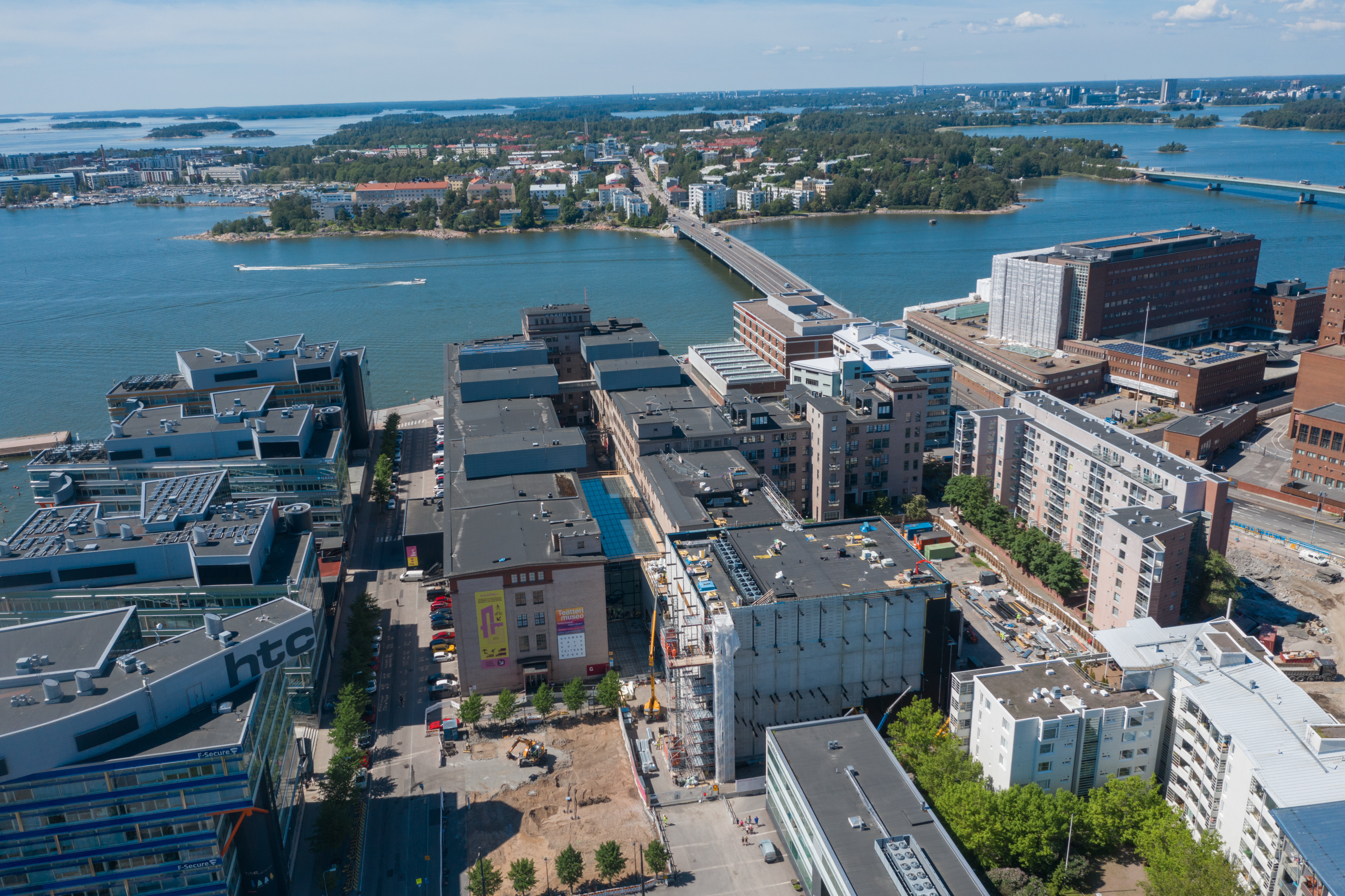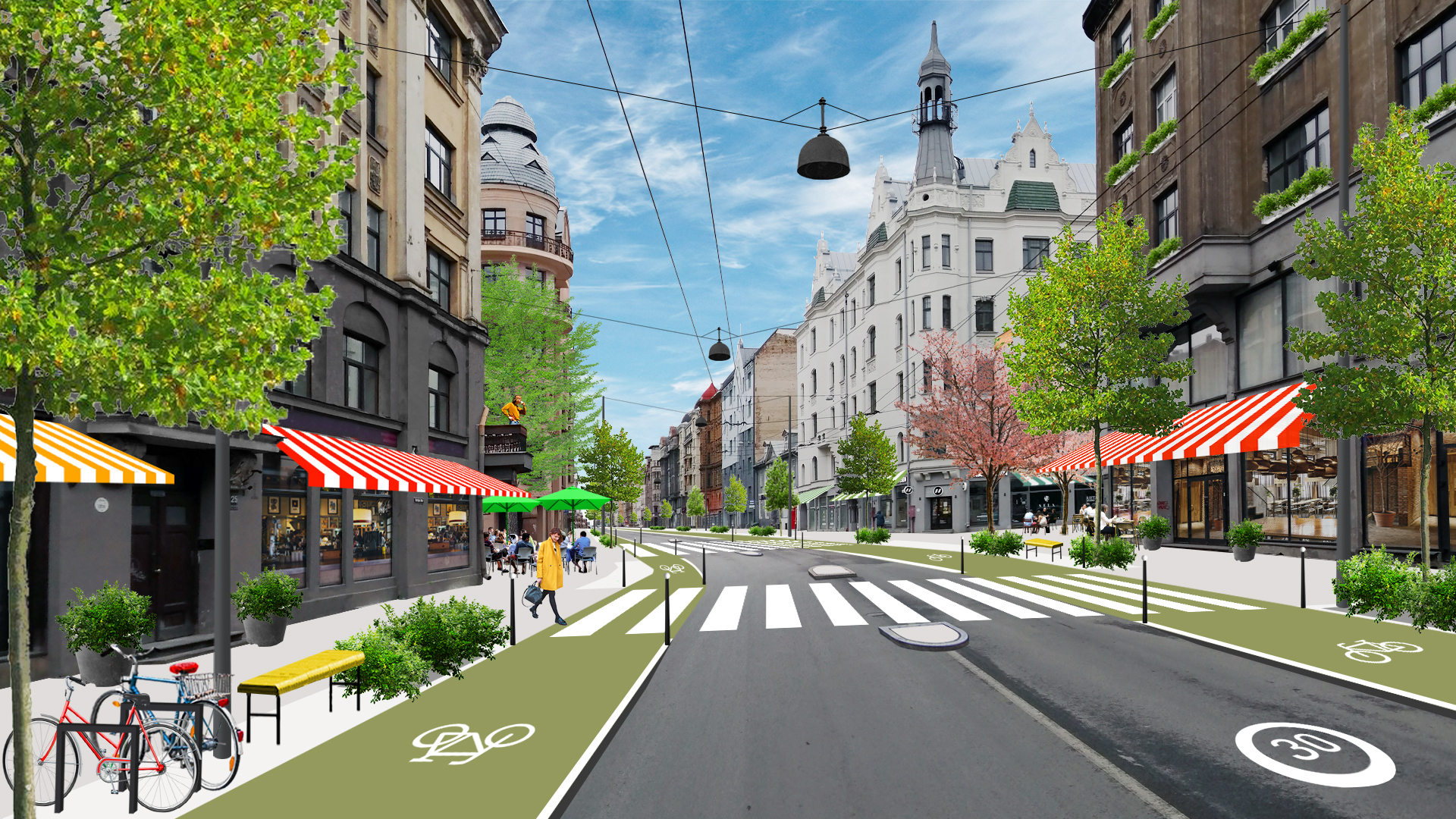Grass-roots intiatives
(29) KAAPELITEHDAS CREATIVE HUB (FINLAND) is situated in a former Helsinki Cable Factory, which is currently the largest cultural centre in Finland. This is another great example of a movement taking shape in Europe, which has seen communities come together to repurpose and revitalise a building and turn it into a hub of innovation and social interaction. The Cable Factory demonstrates the need for a financial model to underpin worthwhile civic initiatives. All the more so since such initiatives can run out of steam because of a lack of financial support from the traditional l banking sector. The gradual process of reclaiming, re-imagining, trialling temporary use and then adapting it for mixed use led to the overall vision, one with considerable diversity of use and vibrancy. While the original factory building was designed by architect Waino G. Palmqvist, several contemporary architects have worked on the renovation and the new Dance House Helsinki, such as JKMM Architects and ILO Arkkitehdit, among others.
It houses three museums, ten galleries, dance theatres, art schools, artist studios, band rehearsal spaces and spaces for businesses. Unique spaces are also available for rent on a short-term basis to stage concerts, exhibitions, festivals and fairs. Around 900 people work at the Cable Factory and each year nearly 340,000 people attend carefully curated events.
The administrator is the property management company Kiinteistö Oy Kaapelitalo, which is owned by the City of Helsinki. The company is responsible for renovating and renting the former industrial complex and tailor it to the needs of arts, culture and artisan crafts. Kiinteistö Oy Kaapelitalo has more than 300 long-term tenants and numerous subtenants at Cable Factory. The overall aim is to find tenants who support not only the development of the cultural centre in general but also each other’s activities. The income is generated almost entirely by rents without any public subsidies.
View of the Cable Factory creative hub (Kaapelitehdas) in Finland.
While the original factory building was designed by Wäinö G. Palmqvist, several
contemporary architects, such as Pia Ilonen and Heikkinen-Komonen Architects, have worked on the
renovation of the building. The new Dance House Helsinki extension is designed by JKMM
Architects and ILO Architects.
© Patrik Rastenberger

(30) CITIZEN ACTIVISM IN RIGA (LATVIA) is an example of citizens making themselves heard and getting through to politicians and decision-makers. This citizen movement shared a frustration over the decline in quality of Riga’s public spaces. To change this state of affairs, an alliance of local businesses and neighbourhood activists started posting design solutions for better streets on social media, then catching the attention of a wider audience and politicians. Thousands of people locally and internationally praised inspirational visualisations and drawings by Oto Ozols, who took a fresh approach to many of Riga’s major urban landscape problems (1). This created a critical mass and pushed the issues high up in the of the city’s local elections in 2020. The movement made all parties take note and commit to improvements to the quality of architecture and public space in Riga in their campaigns.

Proposal for Aleksandra Čaka iela in Riga, 2021.
Courtesy of
Oto Ozols
Findings and observations
- Community-generated economic and environmental initiatives can serve as a good example to learn from for future policies and strategies. Grass-root initiatives will foster a soft infrastructure, the invisible and stabilising framework of society, which is essential to create enablers.
- Volunteering is essential to grass-roots initiatives, adding essential social capital and staff to projects.
- Grass-roots initiatives are not only about the development of housing and infrastructure, but they also address particular social issues such as the quality of the living environment, healthcare, energy, space for entrepreneurship or education.
- Involving students in grass-roots pilot schemes and integrating related assignments into the curriculum creates new dynamics.
- Grass-roots initiatives create fields of experimentation for citizens, entrepreneurs and the government, helping explore new relationships between those stakeholders.
- Knowledge sharing is key, both in terms of using existing knowledge as well as generating and communicating new knowledge.
- It is important for local, regional or national governments to think of ways to encourage and promote grass-roots initiatives, for example through grant scheme (as in the case of the Dutch creative industries fund) or with the help of other financial or organisational incentives.
- Grass-roots initiatives and citizen movements are great at highlighting the cultural, historical and architectural value of (disused) places, including through temporary occupation, or reuse leading to more long-term quality results.
(1) ‘The Evolution of the Intersection’ on Vimeo: https://vimeo.com/547644784